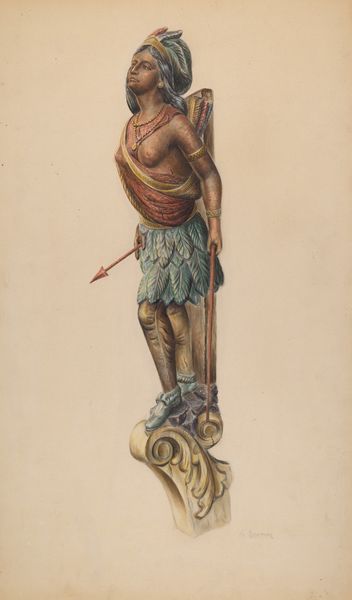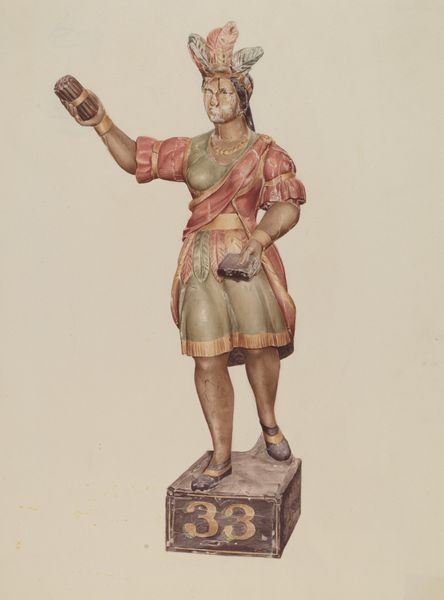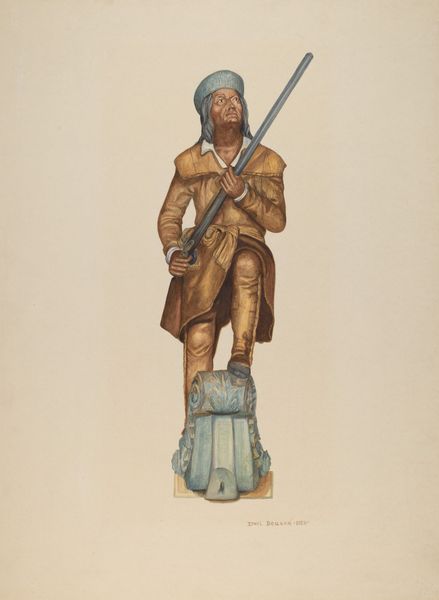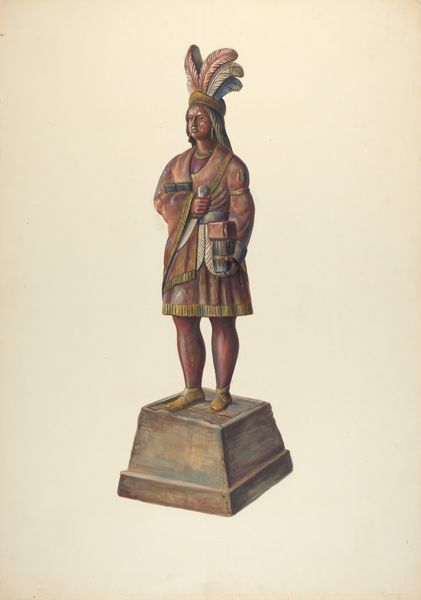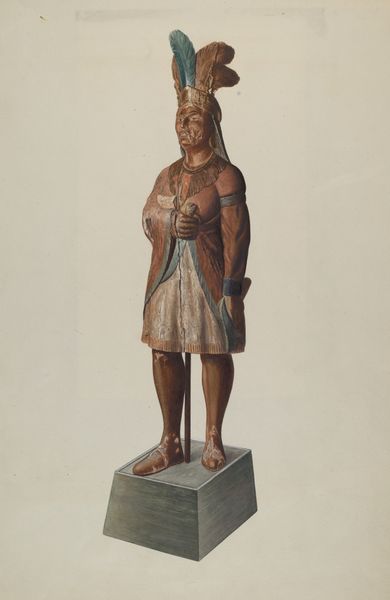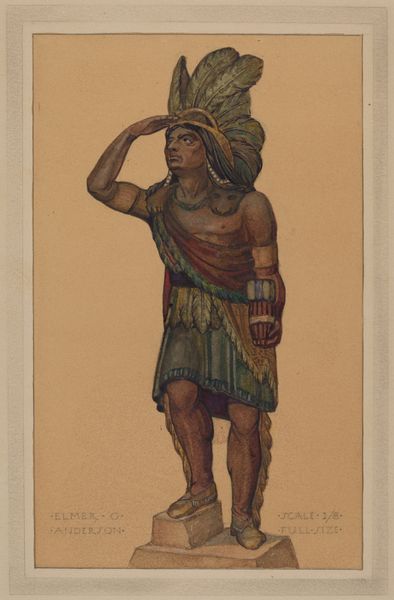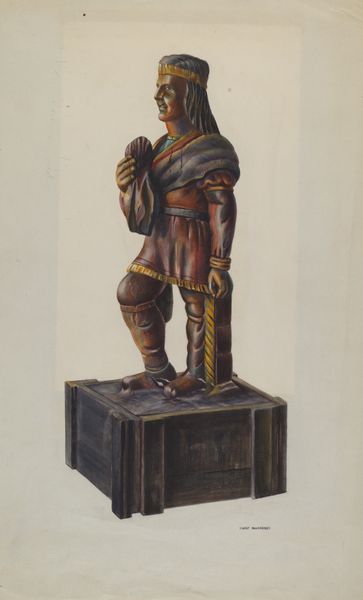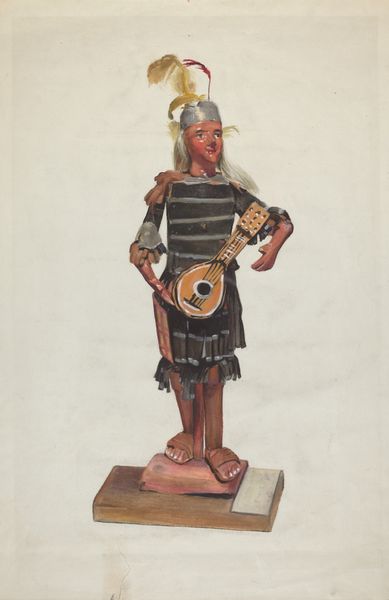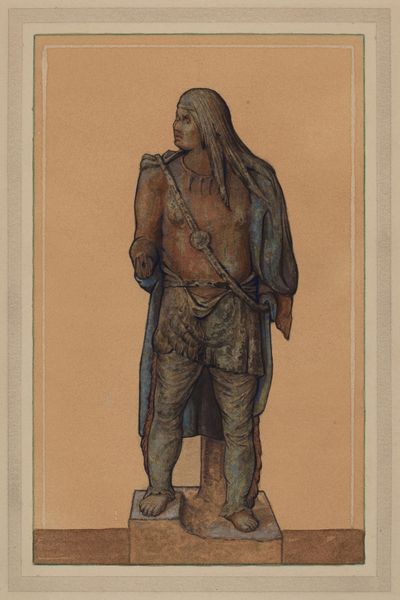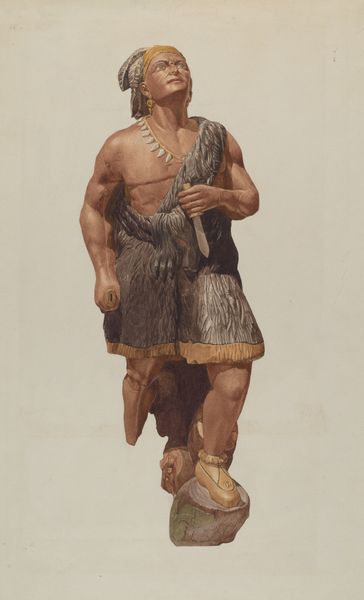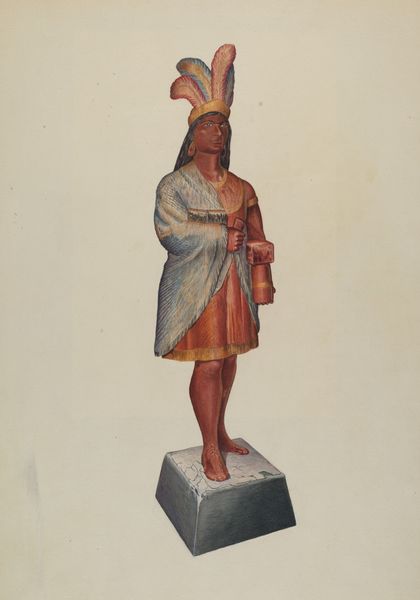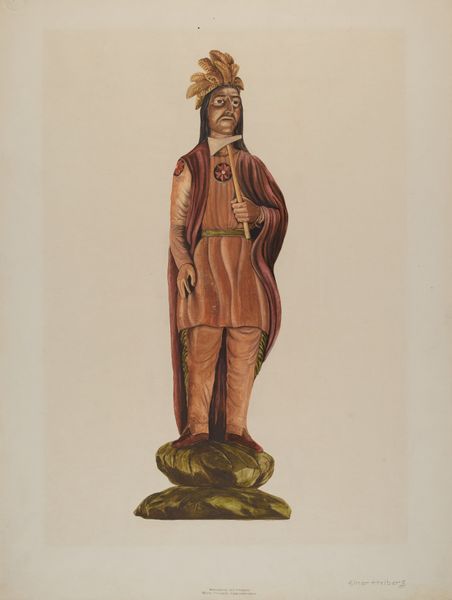
painting
#
portrait
#
painting
#
figuration
Dimensions: overall: 42.8 x 28.2 cm (16 7/8 x 11 1/8 in.)
Copyright: National Gallery of Art: CC0 1.0
Curator: Here we have "Cigar Store Indian," a work circa 1937. It seems to be a mixed media piece incorporating watercolor on paper along with wood sculpture elements, possibly realized as a study or documentation of existing forms. Editor: Immediately, I see an attempt at dignifying a form steeped in racial stereotyping. The upward gaze is powerful but feels undercut by the object's original, commercial purpose. Curator: Observe how the artist uses watercolor washes to suggest the play of light on the carved wooden figure. There’s a distinct tonal separation defining the figure, yet also an integration that speaks to classical modes. Editor: But the cigar store Indian itself functioned as a violent, visual shorthand for the "exotic" other. Examining this piece invites interrogation: is it attempting to reclaim or merely re-present this symbol? The missing leg reads as another form of dismemberment or cultural erasure. Curator: I’d argue there’s a clear effort to engage with form and surface through nuanced light. Look at how the watercolor defines the textures. These were commercial objects. It can be viewed as art history, even Americana, approached as genre representation. Editor: That ignores its legacy of harm, especially considering its context within ongoing Indigenous erasure during that period. By ignoring how meaning is produced around the object, you overlook power relations materialized within the cultural object itself. Curator: The posture does imbue a level of nobility that deviates from typical portrayals in popular advertisement—look at that resolute jawline. There is intentionality there that pushes it toward respectful representation through a classical understanding of sculptural figuration. Editor: Intentionality doesn't negate impact, though. How do Indigenous people themselves view this image, knowing their communities were battling stereotypes the cigar store Indian actively perpetuated? Without centering those narratives, the image risks reproducing the harm. Curator: What I see, ultimately, is an early study for three-dimensional form by someone trained with formal sensibilities who wanted to understand proportion. Editor: Perhaps a crucial point, but let us carry forward with the need to consider the larger historical canvas such objects carry, alongside their form, composition, or intent.
Comments
No comments
Be the first to comment and join the conversation on the ultimate creative platform.
